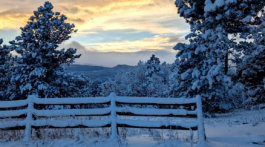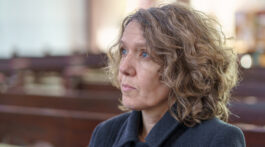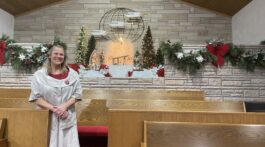Sabbath School Lesson for September 4-10, 2021
Teresa’s YouTube channel about the lesson: http://www.youtube.com/teresathompson
Overview for Lesson 11
Since we have explored the Sabbath and found it to be such a helpful day for finding all kinds of rest, we now look to other Old Testament examples for ways they can inspire us in our search for rest in Christ. These examples include…
- Sunday: the Hebrews’ escape from slavery in Egypt, particularly their passage through the Red Sea (compared to our baptism and new life in Christ)
- Monday: the sacrificial system God showed to Moses to educate them about the coming Messiah (especially the lamb offering representing God’s Son, the Lamb who takes away the sins of the world)
- Tuesday: their keeping of the Sabbath, which illustrated how they were to rest from their own works and praise God for His
- Wednesday: the unfaithfulness and disobedience of Israel, showing us why we are told not to harden our hearts against God
- Thursday: their entrance into Canaan after forty years of wandering in the desert, which compares to our spiritual journey and finding our final resting place in heaven
One reason why models, pictorial depictions, and other small representations of bigger things are useful, is that they encourage us to long for the real thing. Many rituals and events in the Old Testament serve this purpose. They help us grasp deeper, spiritual themes that we might otherwise overlook or even misunderstand. They give us the incentive to keep on striving for the ultimate prize of spending eternity with God.
Memory Text: “Now these things took place as examples for us, that we might not desire evil as they did.” 1 Corinthians 10:6 ESV
This passage in 1 Corinthians, along with Hebrews 4, provides much insight into our Christian walk and how it relates to our forefathers’ experience in the Old Testament. Understanding these examples, the good and the bad, are crucial in our ability to find true rest in God today.
Sunday: Baptized Into Moses (1 Corinthians 10:1-11)
The Hebrews had seen miracle after miracle in Egypt, as God prepared them for their departure from their land of bondage. They were even awed by the cloud that guided them, knowing that God was always at their side. But when their faith grew to the point that they followed Moses through the path of the raging Red Sea, they knew that something miraculous had been done for them personally.
This unforgettable event truly symbolizes the cleansing waters of baptism that Christians are so familiar with. We also enter those waters by faith and come out of them with a new heart, cleansed and empowered by the Holy Spirit, who continues to guide us through our faith journey.
1 Corinthians 10:1-11 challenges us to take the story of Moses and use it to enrich our own Christian walk. There are many symbols of Christ in these episodes of faith. Jesus was represented by the manna (the “bread of life”–John 6:48), the water that came gushing out of a rock (the “living water”–John 4:1o). He was even revealed as the Rock itself (1 Corinthians 10:4).
Besides these memorable symbols of Christ, we gain an understanding of what can deter us from following God and lead to hardships along the way. The selfish, complaining behaviors of the children of Israel should inform us of our own disobedient tendencies and show us where our unfaithfulness can lead. Reflecting on their bad examples can actually prevent us from making the same mistakes.
Bible Verses to Read and Discuss:
1 Corinthians 10:1-4
- In what ways do you see the crossing through the Red Sea as a form of baptism?
- What symbols do you see here that teach us about Christ?
1 Corinthians 10:5-11
- What were some of the mistakes that were made during the Exodus?
- How does their experience influence ours?
Monday: Ritual and Sacrifices
Our modern culture naturally turns away from stories that involve the killing of innocent animals and other rituals. But God’s purpose was to draw them out of the pagan, idolatrous lifestyle that was so much a part of their life in Egypt. Keep in mind that it was standard practice for humans to be sacrificed in these pagan services. Killing an animal must have seemed very tame in comparison to that barbaric custom.
The Israelites during the time of Moses understood the lessons taught by the sacrificial system. The system God instituted at that time reminded them of the price His own dear Son was to pay for their sins. Shedding the blood of an innocent lamb was understood by all as connected with the Messiah’s sacrifice for our transgressions. They knew the connection of blood to their atonement with God (Leviticus 17:11).
The second encounter in the courtyard of the tabernacle was the laver. The water also had spiritual significance, emphasizing our need for cleansing from sin. When Jesus came to John the Baptist for baptism, John recognized immediately the connection between his cousin and the work of the Messiah. He said, “Behold! The Lamb of God who takes away the sins of the world!” (John 1:29).
Becoming familiar with the symbols found in Old Testament literature is essential for us to fully grasp the meaning of symbols God continues to use throughout the New Testament. Moreover, they deepen our understanding of the plan of salvation.
Bible Verses to Read and Discuss:
John 1:29 and 1 Peter 1:18-21
- How did these two disciples relate the Savior to the symbols of their Jewish upbringing?
- Why is the Messiah represented by a lamb that was slain? Especially a spotless one, without blemish?
Tuesday: The “Example ” of Rest (Hebrews 4:1-11)
One of the very bad examples that we see in Moses’ story was the lack of faith shown by the Hebrews when they first came to Canaan and refused to enter. Their choice led to forty more years in the wilderness, the time required for the unfaithful ones to die and their children to take their place.
If they had followed God’s command to reclaim their land when they first got there, they would have found the kind of rest that God wanted for them much sooner. Unfortunately, they continued to go back and forth in their commitment to follow God, and the price for their inconsistency was heavy.
There is evidently a strong connection between rest and faith. We can only enter God’s rest when we believe and have faith in the Person giving it. When our faith is not strengthened by trust and obedience, we have chosen rebellion, just like those disobedient ones in Moses’ time (Hebrews 4:11).
There continues to be a sweet rest in Jesus. The kind of Sabbath day rest that comes from being saved by grace and not works.
Bible Verses to Read and Discuss:
Hebrews 4:1-6
- Why is faith necessary to enter God’s rest?
Wednesday: “Harden Not Your Hearts”
The Sabbath rest, or any kind of spiritual rest, is not possible when we fail to allow God to soften our hearts. When He offers to give us a new heart and spirit in Ezekiel 36:26, He says it’s a heart of flesh. In other words, a soft heart, not hardened by sin.
Yes, obedience is crucial to getting a new heart. The next verse, Ezekiel 36:27 says that His Spirit within us enables us to walk in obedience. We don’t always have this obedience when we come to God for salvation, but under the Spirit’s guidance, our hearts will become changed and obedience will provide evidence of our heart change over time.
God tenderly allowed the Israelites to prepare their hearts during their forty-year sojourn in the wilderness. They often disappointed Him with their selfish choices, but the experiences they had there were necessary for them to grow in grace and be able to represent the God they served. People, especially in those cruel, pagan tribes, would surely notice a people with softened hearts.
Bible Verses to Read and Discuss:
Hebrews 4:3-7 and Psalm 95:8-11
- What does our disobedience tell us and others about our heart condition?
- Why is it impossible to enter into God’s rest when we are disobedient and/or rebellious?
Thursday: Conquering a Heavenly City (Galatians 3:26-29)
The story of salvation did not end with Joshua and the Hebrews entering Canaan. Paul points out that we are all sons and daughters of God, heirs of His Kingdom of peace and rest. Our faith in Christ makes us Abraham’s seed, who still long for the future Land of Promise and its rest.
As Hebrews 4 told us, we find that rest symbolized by the day of rest, the Sabbath. The best way to reach our desired destination is to embrace that God-given sign that allows us such sweet communion with Him every week.
The Sabbath reminds us of the need to rest in God’s works, not our own. Trusting in God’s grace is the only way we can be transformed and someday enter the heavenly city God is preparing for His children.
Bible Verses to Read and Discuss:
Galatians 3:26-29
- We are all equal in God’s eyes, but what does it mean when we belong to Christ?
- How does being Abraham’s seed affect us?
Hebrews 4:7-11
- What kind of rest are we expected to have when we have not “hardened our hearts”?
- Why, or why not, is not keeping the Sabbath a form of disobedience?
Friday: Final Thoughts
Both 1 Corinthians 10 and Hebrews 4 bring out stories from the Old Testament that illustrate our Christian walk. The history of Israel is an example of how Christ delivers us from the bondage of sin, leads us through the waters of baptism, feeds us through His word, and quenches our spiritual thirst as we travel through this earthly desert.
Studying the sacrificial system of the Hebrews, with all its symbols of Christ, can greatly enhance our study of God’s plan of salvation. The rest we enjoy on the Sabbath foreshadows our larger rest in Christ, and our even sweeter rest when we enter the heavenly City of God at His Second Coming.
Yes, these stories about Israel feed our desire to know more about creation, the cross, and the Second Coming. These three themes encompass salvation history and should always be the guideposts of our longing for spiritual rest.
Next Week: The Restless Prophet
To read the Sabbath School Lesson Quarterly or see more resources for its study, go to










